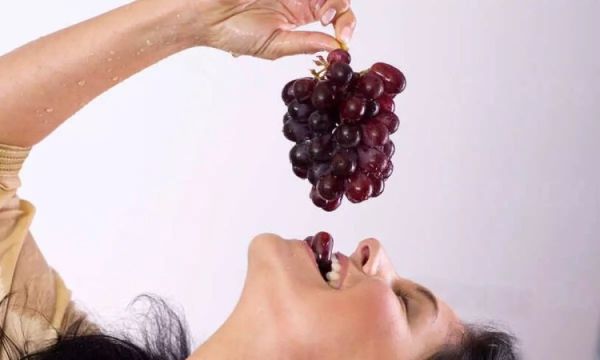
sun protection, meals high in antioxidants, UV protection, skin health, Protective foods and a summer diet are essential for good skin health and UV protection. You may get accidental sun exposure while going about your day, even if you’re not at the beach tanning.

Sun protection is the most crucial thing you can do to protect yourself from sun harm. But certain lifestyle adjustments may also help protect the skin from UV rays. The foods we include in our regular diet are essential for shielding the skin from damaging UV radiation.
With so many ingredients in meals that have different protective benefits, I would rank diet just behind sunscreen.
During the summer, foods high in antioxidants should be your greatest ally in the pursuit of healthy, radiant skin. To help prevent UV damage, make sure your skin gets enough nutrients during the summer.
1. Herbs
The skin may be shielded from UV damage by herbs like elderflowers and rosemary and certain oils like coconut and red raspberry seed oil.
Because of their antioxidant properties, herbs have a lot of promise. much while isolated plant chemicals have a lot of promise for skin protection, the complex structure of entire herb extracts makes them much more effective.
Extracts from rosemary, in particular, can protect against UV damage from the sun. According to many studies, ingesting a lemon and rosemary extract on a daily basis for more than eight weeks considerably reduced UV damage in people. Sun care creams often include rosemary extract. The addition of rosmarinic acid improves the sunscreen’s photoprotective effectiveness.
It has also been shown that walnut extract works very well as a self-tanning sunscreen. It includes substances that create colored compounds that shield the skin from UV rays by reacting with the keratin proteins in the skin.
Known for its pleasant aroma, lavender has been shown in tests to prevent the production of free radicals, which are mostly responsible for UVA/UVB radiation-induced damage.
2. Cocoa
This summer, how can you keep your skin safe? Eat chocolate, stay away from tanning parlors, and use sunscreen. It is true, indeed!
Cacao and cocoa are great sources of antioxidant-rich polyphenols, which help shield the skin from UV damage, as if we needed more reason to enjoy chocolate.
Flavanols, which are very abundant in fresh cocoa beans, provide strong photoprotection and may thus be useful in protecting human skin from damaging UV rays.
When consistently taken, cocoa flavanols, potent antioxidants included in premium dark chocolate, may shield the skin from UV ray damage. It has been shown that consuming 20 grams of a cocoa-based beverage on a regular basis for more than three months considerably lowers the risk of UV-induced skin damage.
In addition to providing sun protection, cocoa increases skin suppleness and minimizes wrinkles. The high-cocoa beverage improved the skin’s ability to retain moisture and blood flow. It’s crucial to stay with bars that contain 70% or more cocoa since they have a higher concentration of flavanols and less added sugar than other types of cocoa, like chocolate, which probably have comparable benefits.
It’s crucial to remember that not all chocolate has healthy flavanols. These are not consequences of regular chocolate. Dark chocolate that is marked as “preserved with HF (high flavanol) levels” is the lone exception. One excellent method to get the advantages of chocolate without going overboard is to choose lower-sugar varieties, such as dark chocolate.
3. Salmon
Packed with antioxidants and omega-3 fatty acids, salmon is a tasty fish that helps prevent UV-induced cellular damage and lessen sunburn inflammation. Nutrients found in salmon help protect the skin from damaging UV rays.
Astaxanthin, which is abundant in salmon, is 1,000 times more potent than vitamin E and more potent than vitamin C and CoQ10.
By lessening cell damage brought on by free radicals during extended sun exposure, astaxanthin might enhance skin health. Astaxanthin might be compared to “sunscreen” on your plate.
Add veggies like leafy greens, cauliflower, and carrots to your salmon dish for an even more potent feast. Your skin may get an additional boost of protective nutrients from this combo.
4. Grapes in red
One of the best ways to shield oneself from damaging UV radiation is to include grapes in your cosmetic routine. Resveratrol, a potent antioxidant that helps fortify your skin’s defenses against UV damage, is abundant in red grapes.
It has been shown that eating red grapes on a regular basis helps avoid sunburns brought on by exposure to UV radiation. In addition to physical sun protection, a diet high in grapes serves as a kind of “oral sunscreen.”
Grapes’ antioxidants provide an extra line of protection against sun-induced skin damage. Grapes may thus be a beneficial addition to your total sun protection regimen if you include them in your diet.
A diet high in foods high in antioxidants may also provide essential UV protection, even if sunscreen and protective clothes are the primary lines of defense against sun damage. you properly protect your skin from damaging UV rays; just be sure you eat these meals all day long.